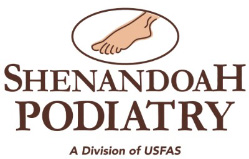 Yes. If your child’s toes point inward at rest or while standing, walking, or running, taking them to a skilled podiatrist can help ensure their lower legs are developing properly and provide much-needed peace of mind. Here’s what you should know about pediatric intoeing, including when it’s a cause for concern and how the dedicated doctors at Shenandoah Podiatry can provide the experienced and compassionate care your growing child needs to thrive.
Yes. If your child’s toes point inward at rest or while standing, walking, or running, taking them to a skilled podiatrist can help ensure their lower legs are developing properly and provide much-needed peace of mind. Here’s what you should know about pediatric intoeing, including when it’s a cause for concern and how the dedicated doctors at Shenandoah Podiatry can provide the experienced and compassionate care your growing child needs to thrive.
Intoeing Isn’t Always a Cause for Concern
Walking and running with toes pointed toward each other, called intoeing or pigeon toes, is common among young children, particularly when they’re first learning to walk and navigate the world around them. Intoeing looks awkward and many parents worry that it will negatively affect their child’s growth or development. Fortunately, though pigeon toes can look concerning, the good news is that the condition rarely causes pain and often resolves on its own without treatment. However, because some cases of intoeing do require medical treatment, consulting an adept podiatrist is essential.
What Causes Pigeon Toes
Intoeing is typically caused by misaligned bones or joints. Primary causes of pigeon toes in healthy children include:
- Metatarsus adductus. In children with metatasus adductus, the feet bend inward from the middle of the foot to the toes, partially resembling a clubfoot deformity. This deformity often resolves by the time children are six months old.
- Tibial torsion. When a child’s shinbones rotate inward, the tibial torsion can cause them to walk and run with pigeon toes. This type of intoeing usually resolves before the child begins school.
- Femoral anteversion. Thighbones (femurs) that turn inward can also cause intoeing in children. Pigeon toes are caused by femoral anteversion often before the age of 10.
When to Take Your Child to See a Podiatrist
Though intoeing isn’t always cause for concern, schedule an appointment with a podiatrist if your child frequently trips or falls, limps, has difficulty walking or running, or suffers from swelling or pain that interferes with activities. You should also talk to a podiatrist if you notice the deformity worsening rather than improving over time.
Pediatric Intoeing Treatment Options
While not all cases of pediatric intoeing require treatment, early evaluation allows us to watch, wait, and intervene as necessary. The cause of your child’s pigeon toes, as well as their age, symptoms, and the severity of their deformity will help determine the course of treatment. Common options include special shoes or braces, exercises or physical therapy, and serial casting to stretch and lengthen muscles. Additionally, though surgery is always the last option at Shenandoah Podiatry, in some cases, it is necessary to obtain the best results. Talk to us about your child’s treatment options.
Questions to Ask at Your Child’s Podiatry Appointment
Scheduling a podiatry appointment for your child? Don’t forget to ask the doctor these vital questions:
- What is the cause of my child’s pigeon toes?
- How severe is their intoeing?
- Will the intoeing resolve on its own?
- If my child requires treatment, what are our options?
- Are there exercises we can do at home that might be beneficial?
- Will my child need to wear special shoes or braces?
- Should I restrict my child’s activities? Is it safe for them to run, jump, and play as usual?
- Will intoeing lead to long-term problems for my child?
- Will my child require surgery to correct the deformity?
Helping Children Put Their Best Feet Forward
Taking your child to see a podiatrist when they’re young can help put their feet on a path to lifelong podiatric health. At Shenandoah Podiatry, we provide the conscientious and highly-skilled podiatric care your child needs in a calm, relaxing atmosphere that encourages healing.
Ready to find out what we can do for your child’s feet? Complete our online contact form or call us at 540-904-1458 to schedule an appointment for your child with one of our specialists.
|
Related Links: |
